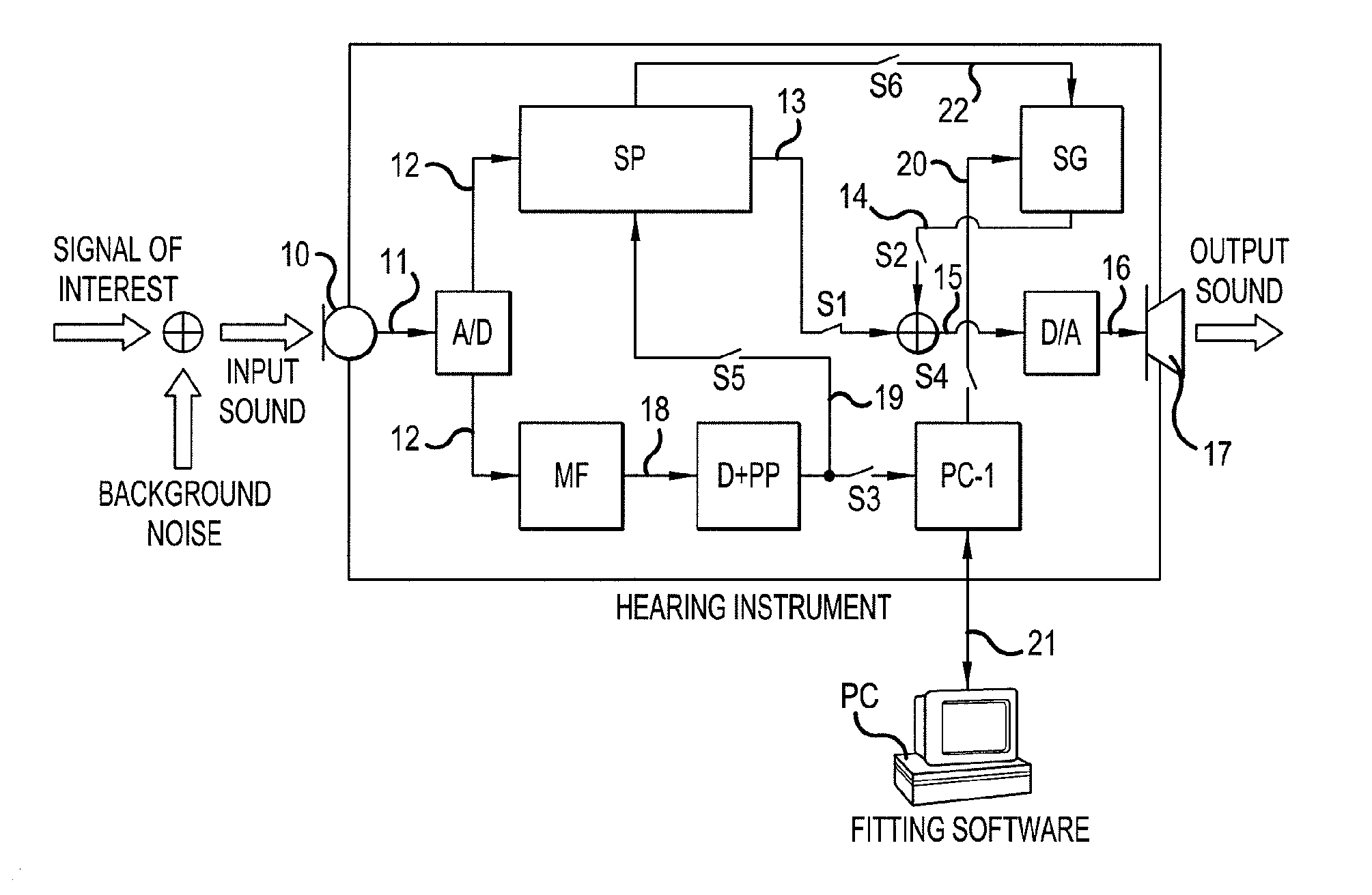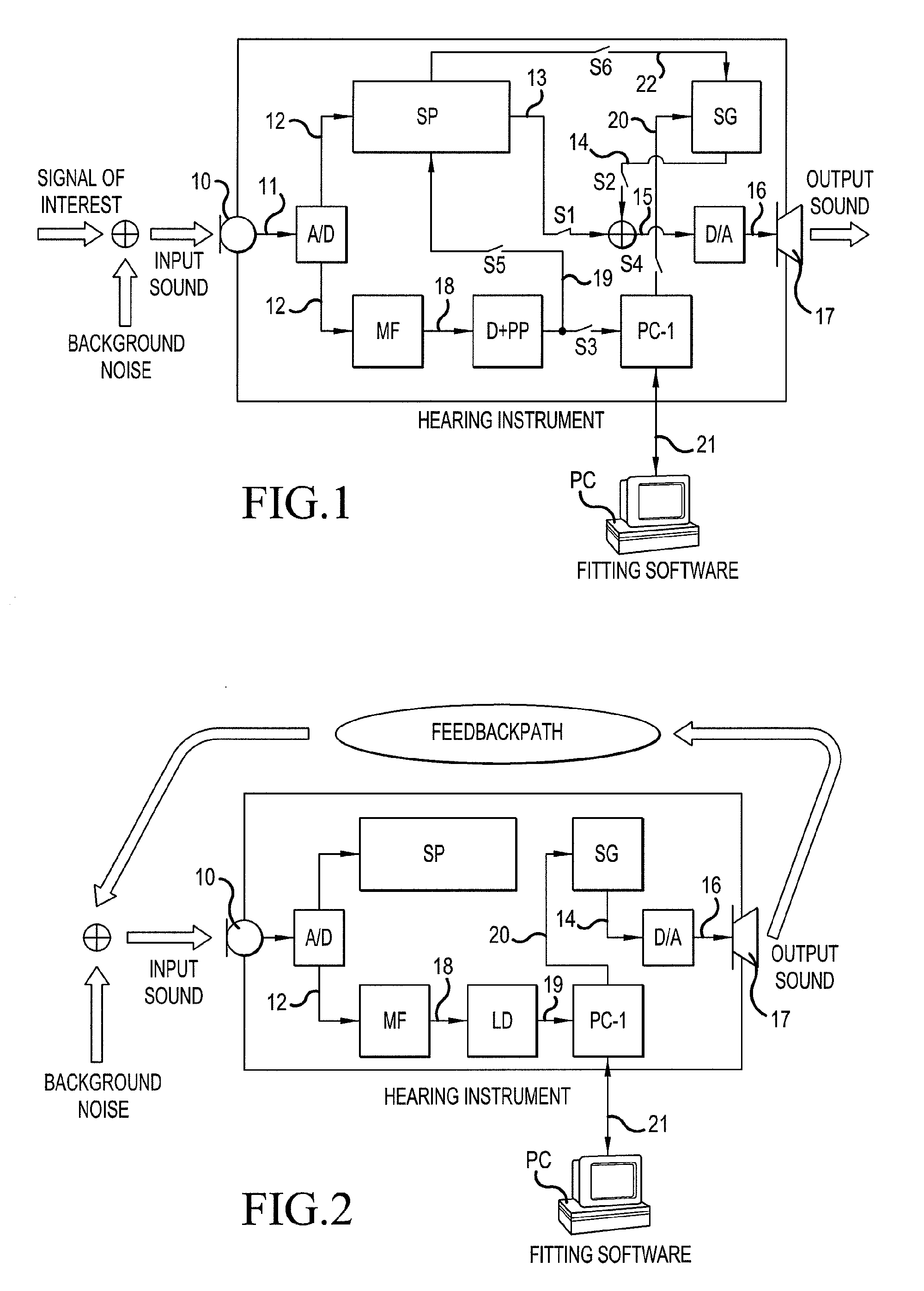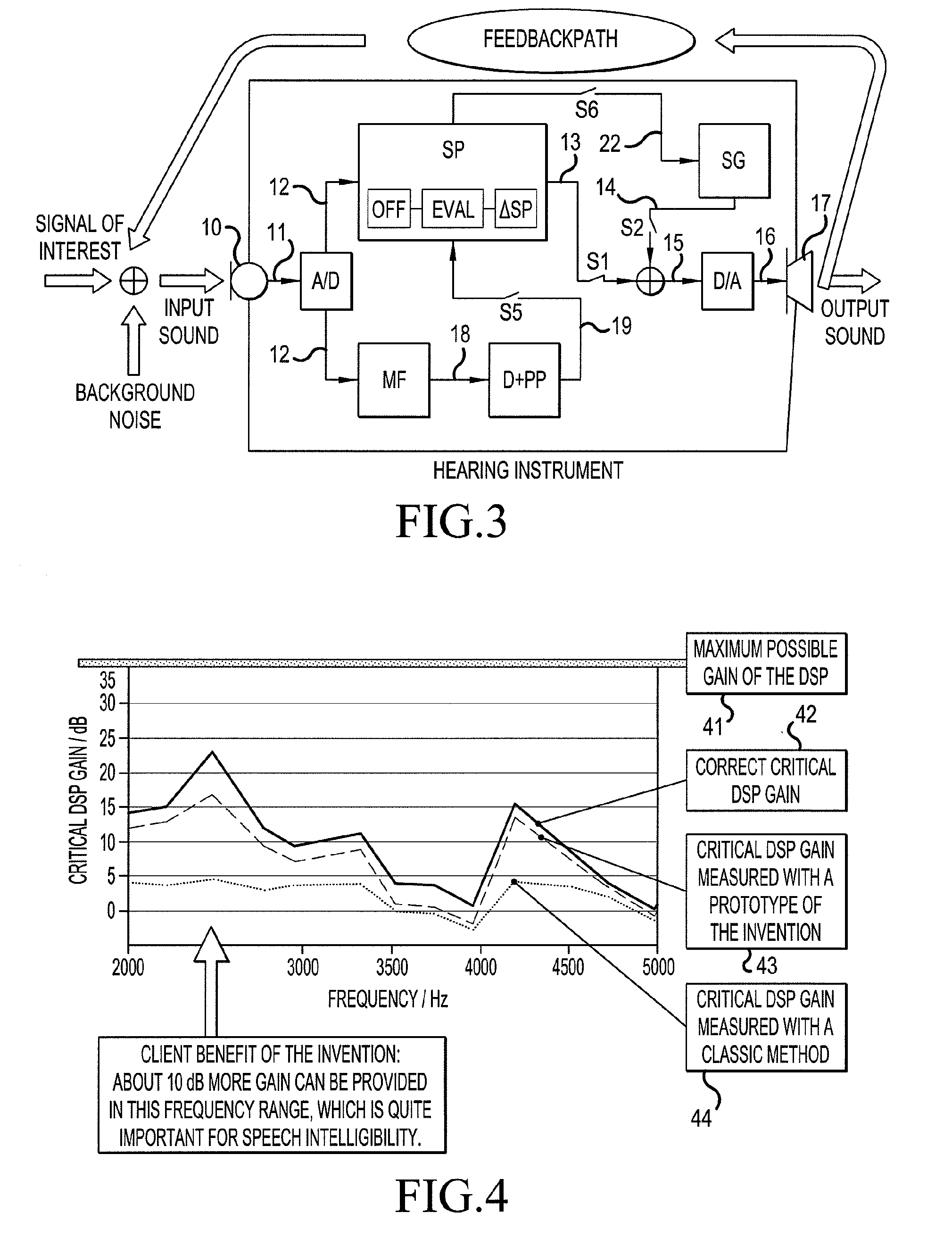Hearing aid system comprising a matched filter and a measurement method
a filter and hearing aid technology, applied in the field of hearing aid systems, can solve problems such as inability to implement, and achieve the effect of improving the signal-to-noise ratio of hearing aids
- Summary
- Abstract
- Description
- Claims
- Application Information
AI Technical Summary
Benefits of technology
Problems solved by technology
Method used
Image
Examples
example
“Critical Gain Measurement”
[0081]FIG. 2 is an illustration of a critical gain measurement using a hearing aid system according to an embodiment of the invention. The components of the hearing instruments shown in FIG. 2 are identical to those shown in FIG. 1, but their interconnection is different. The Detector+Post-processing unit of FIG. 1 is substituted by a Level detector (LD) in FIG. 2. The purpose of the Level detector is to measure level of signal produced by the signal generator that is picked up by the Hearing Instrument's input transducer. Subtracting the level of the signal that was produced by the signal generator from the measurement result on the dB scale yields an estimate of the transfer function between signal generator and Level detector at the frequency or frequency range of the signal emitted by the signal generator. The Level detector can be implemented as follows: its input signal is rectified or squared and then passed to a short-time integrator that applies o...
examples
“Automatic / Normal Mode”
[0104]FIG. 3 shows an illustration of a configuration of a hearing aid system according to an embodiment of the invention in a normal operating mode. As illustrated in FIG. 3, a signal generator (SG) in the Hearing Instrument generates a predefined source signal 14, which is transformed to an output sound by the Hearing Instrument's output transducer 17. By measuring the level of that signal at the input transducer 10 of the Hearing Instrument, certain properties of the acoustic path (Feedbackpath) can be determined (e.g. transfer function and average gain). The measurement accuracy can be improved if the input signal is passed through a matched filter (MF) before the level measurement (in the detector unit D+PP), as is the case in the embodiment of FIG. 3. The measured properties of the acoustic path can be used to analyze the Hearing Instrument wearers current acoustic environment and to react to it appropriately. This is illustrated in FIG. 3 in that the ou...
PUM
 Login to View More
Login to View More Abstract
Description
Claims
Application Information
 Login to View More
Login to View More - R&D
- Intellectual Property
- Life Sciences
- Materials
- Tech Scout
- Unparalleled Data Quality
- Higher Quality Content
- 60% Fewer Hallucinations
Browse by: Latest US Patents, China's latest patents, Technical Efficacy Thesaurus, Application Domain, Technology Topic, Popular Technical Reports.
© 2025 PatSnap. All rights reserved.Legal|Privacy policy|Modern Slavery Act Transparency Statement|Sitemap|About US| Contact US: help@patsnap.com



